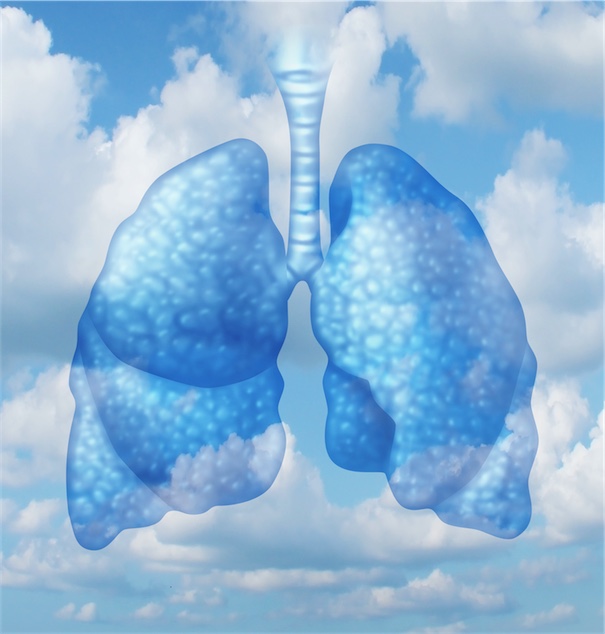What if I told you there was something you could do right now (and hopefully ARE doing right now) that’s totally free and requires no equipment?
It will:
- Increase your energy,
- Sharpen your mind,
- Reduce anxiety,
- Boost your immune system,
- Lower blood pressure and
- Improve your digestion.
WOW! What is this wonderful thing?
Breathing
Oxygen is essential for life in an urgent, you’ve got 3 minutes without it before some serious damage gets done, kind of way. (Unless you happen to be one of those highly trained free divers. But don’t try that one at home!)
When it comes to the other life essentials like water and food you’ve got around 3-5 days and 30-40 days respectively before you’re toast.
What is breathing?
Breathing (or pulmonary ventilation) is the air exchange between your lungs and the atmosphere. Red blood cells, thanks to a molecule called hemoglobin, pick up inspired oxygen from the lungs and take it all throughout the body, exchanging it for carbon dioxide which is then expired on the exhaling breath 1.
The majority of atmospheric air we breathe is composed of nitrogen (78%) but it’s the 21% of oxygen that is essential for us to chemically activate the cellular energy from glucose and fatty acids (breakdown products of what we eat) 2. For those interested in deeper look out the chemistry check out this great explanation by Science Clarified. This energy is required to run all cellular metabolism. Extended oxygen deprivation results in irreversible cellular damage and death. Yikes!
Of all the organs in the body, the brain has the most voracious appetite for oxygen carving up a 25% share for itself. Reduced oxygen in the brain results in a decrease in mental alertness, apathy and poor judgment 3. Good digestion also requires a lot of oxygen and poor breathing can result in bloating, constipation and reduced nutrient absorption 4.
The average person takes over 21,600 breaths per day so you’d think with this amount of practice you’d be a breathing expert. The reality, though, is if you are predominantly an indoor, office dwelling, keyboard warrior you probably suck at it.
Sitting down at desk all day is not the best thing for many aspects of our health but when it comes to breathing our tendency to slump and hunch our shoulders shortens our front muscles and compresses our lungs resulting in shallow breathing 5. In addition a modern lifestyle where our nervous systems are predominantly operating in flight or fight mode also encourage rapid shallow breathing 6.
3 tips for better breathing:
- Get in touch with your diaphragm
The diaphragm is a dome shape muscle that sits at the bottom of your lungs and it should be the key player of the breathing muscles performing 75% of the workload. Your ribs (external intercostal muscles) do the rest. When you inhale the diaphragm flattens creating more space in your lungs and when you exhale it returns to the dome shape 1.
What you don’t want for everyday breathing is to be using your neck and shoulder muscles. These accessory muscles should only be coming in to play if you are doing vigourous exercise or running away from a tiger! Otherwise you’re breathing inefficiently and making your massage therapist rich.
If you’ve ever done a yoga class chances are you’ve had instruction in this technique and it is easier to get the idea of it lying down.
Benefits of diaphragmatic breathing
- Air reaches more of your lung surface area resulting in better oxygenation of your cells and tissues 7;
- Movement of the diaphragm helps move the fluid in your lymphatic system resulting in improved immune function and detoxification 8;
- Reduces the pressure in your chest and your heart doesn’t have to work as hard 9;
- “The nose is for breathing, the mouth is for eating” Proverb
Yep! Teach yourself to breathe through your nose. Your nose has tiny hairs (cila) and mucus that trap small particles, viruses and bacteria. If you’ve ever walked around a large city for a day and then blown your nose it’s not pretty and you don’t want that gunk ending up in your lungs.
It also moistens and warms the airs making air exchange more efficient 1.
Nose breathing may also benefit your relationship as it significantly reduces the incidence of snoring 6!
- Breathe slowly
Animals that breathe slowly may live longer. The giant tortoise takes 4 breaths per minute and racks up a whooping 150 birthdays.
Slow regular breathing activates the Vagus nerve and promotes the activity of the parasympathetic nervous system “rest and digest” and reduces the sympathetic nervous system “flight or fight”.
This breathing style increases both the oxygen to your tissues and the endorphins – neurotransmitters that reduce pain and stress 10. Good building blocks to a long and healthy life!
If you are breathing with your diaphragm you will naturally be breathing more slowly due to an increased lung volume. There are many different techniques for slow breathing. In clinic I use the 4-7-8 technique by Dr. Andrew Weil. If you want to keep it really simple just breathe in and out for a count of 5 seconds. This gives you a 6 breaths per minute rate and you’re on your way to being a giant tortoise!
Breathing for treatment of health conditions
Deep, controlled breathing is used to support management of everything from anxiety to asthma but how much do we understand about the mechanisms? Beyond the empirical evidence of Eastern medicine practices such as yoga, Qi Gong and Tai Chi researchers have started to dig deeper.
- Research has shown that a regular, deep breathing practice can have both and immediate and longer-term impact on mood. Small trials have shown maximum benefit at 3 months for 5 minutes twice a day practice on modulating nervous system function 11.
- A study of 26 people found that controlled deep breathing resulted in a 20% improved post meal insulin response. This may have benefits in the management of diabetes 12.
- Two studies using Buteyko breathing technique on subjects with asthma noted a 50% decrease in the use of bronchodilators and 85% reduction in steroid medication after 6 months and concluded that it was a beneficial complementary treatment 13,14.
How does breathing work?
The mechanism of action is believed to be via stretch receptors in the lungs that activate a cardio-vagal baroflex response 15. Huh? This means when your lungs stretch they trigger receptors that activate your Vagus nerve (the major “nerve of calm”) in your body. This sends you away from “fight or flight mode (sympathetic) into ‘rest and digest mode” (parasympathetic). In parasympathetic mode we reduce production of adrenalin, noradrenalin and cortisol decreasing anxiety and muscle tension. We send more blood to the digestive system and slow down our heart rate 3,11,16. It sounds like a good place to hang out, and it is. This is where our nervous system should be spending the majority of the time.
An essential part of your health
Respiration is our most essential physiological function that not only keeps our body functioning but also regulates our emotions 6. Being conscious of your breathing technique can reap huge health benefits….and did I mention it’s FREE.
Maybe it’s time you tuned into your breath. I’d love to hear about how a breathing practice has changed your health. Please share your story in the comments below.
4 foods to eat if you have high blood pressure
Your 3-step natural approach to give hay fever the flick
A guide on different breathing techniques and their benefits
References:
- Tortora G, Derrickson B. Principles of Anatomy and Physiology. 12th ed. Hoboken, NJ: John Willey & Sons; 2009.
- Ward J. Physiology of breathing I. Surg. 2005;23(11):419–424. doi:10.1383/surg.2005.23.11.419.
- Brown RP, Gerbang PL. Sudarshan Kriya yogic breathing in the treatment of stress, anxiety, and depression: Part I — neurophysiologic model. J Altern Complement Med. 2005;11(1):189–201. doi:10.1089/acm.2005.11.189.
- Farré R, Tack J. Food and symptom generation in functional gastrointestinal disorders: physiological aspects. Am J Gastroenterol. 2013;108(5):698–706. doi:10.1038/ajg.2013.24.
- Badr C, Elkins MR, Ellis ER. The effect of body position on maximal expiratory pressure and flow. Aust J Physiother. 2002;48(2):95–102. doi:10.1016/S0004-9514(14)60203-8.
- Jerath R, Edry JW, Barnes V a., Jerath V. Physiology of long pranayamic breathing: Neural respiratory elements may provide a mechanism that explains how slow deep breathing shifts the autonomic nervous system. Med Hypotheses. 2006;67(3):566–571. doi:10.1016/j.mehy.2006.02.042.
- Martarelli D, Cocchioni M, Scuri S, Pompei P. Diaphragmatic breathing reduces postprandial oxidative stress. J Altern Complement Med. 2011;17(7):623–8. doi:10.1089/acm.2010.0666.
- Courtney R. The functions of breathing and its dysfunctions and their relationship to breathing therapy. Int J Osteopath Med. 2009;12(3):78–85. doi:10.1016/j.ijosm.2009.04.002.
- Barnes VA, Pendergrast RA, Harshfield GA, Treiber FA. Impact of breathing awareness meditation on ambulatory blood pressure and sodium handling in prehypertensive African American adolescents. Ethn Dis. 2008;18(1):1–5. Available at: http://www.pubmedcentral.nih.gov/articlerender.fcgi?artid=3216041&tool=pmcentrez&rendertype=abstract. Accessed October 28, 2015.
- Wilhelm FH, Gevirtz R, Roth WT. Respiratory Dysregulation in Anxiety, Functional Cardiac, and Pain Disorders: Assessment, Phenomenology, and Treatment. Behav Modif. 2001;25(4):513–545. doi:10.1177/0145445501254003.
- Wollburg E, Roth WT, Kim S. Effects of breathing training on voluntary hypo-and hyperventilation in patients with Panic Disorder and Episodic Anxiety. Appl Psychophysiol Biofeedback. 2011;36:81–91. doi:10.1007/s10484-011-9150-5.
- Wilson T, Baker SE, Freeman MR, et al. Relaxation breathing improves human glycemic response. J Altern Complement Med. 2013;19(7):633–6. doi:10.1089/acm.2012.0603.
- McHugh P, Aitcheson F, Duncan B, Houghton F. Buteyko Breathing Technique for asthma: an effective intervention.[see comment]. N Z Med J. 2003;116(1187):U710. Available at: http://www.asthmacare.ie/pdfs/NewzealandButeyko2003.pdf. Accessed October 11, 2015.
- Opat a J, Cohen MM, Bailey MJ, Abramson MJ. A clinical trial of the Buteyko Breathing Technique in asthma as taught by a video. J Asthma. 2000;37(7):557–564. doi:10.3109/02770900009090810.
- Mason H, Vandoni M, Debarbieri G, Codrons E, Ugargol V, Bernardi L. Cardiovascular and respiratory effect of yogic slow breathing in the yoga beginner: What is the best approach? Evidence-based Complement Altern Med. 2013;2013(743504):1–7. doi:10.1155/2013/743504.
- Brown RP, Gerbarg PL. Sudarshan Kriya Yogic Breathing in the Treatment of Stress, Anxiety, and Depression: Part II—Clinical Applications and Guidelines. J Altern Complement Med. 2005;11(4):711–717. doi:10.1089/acm.2005.11.711.

Need help with your health?
Norelle Hentschel is an experienced Naturopath with a clinic in Stones Corner, Brisbane who enjoys supporting her clients to reach their health goals.
Want more articles like this?
Receive a monthly digest of natural health information to help you become “health” sufficient!
PS. Your inbox real estate is precious, and we will never annoy you with sales pitches or share your details with anyone else. One email a month — that’s it.

